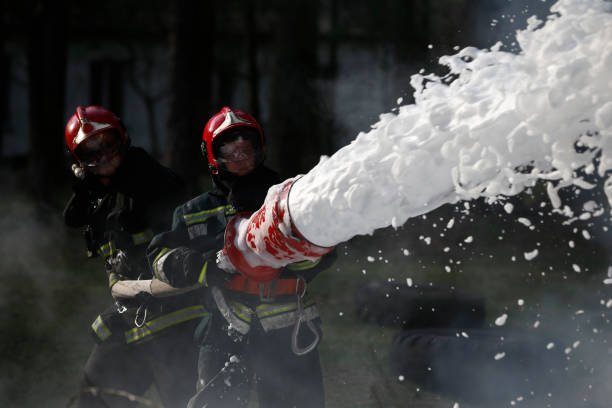Firefighters are known for their bravery and selflessness when it comes to protecting their communities from fires. However, there is a hidden danger lurking in their firefighting tools that can put their health and the health of their communities at risk: firefighting foam.
In recent years, firefighting foam lawsuits have become more common, prompting firefighters to be more aware of the risks and take steps to protect themselves and their communities.
As of November 15, 2022, there are now 3,299 pending cases in the AFFF (firefighting foam) class action MDL. According to TorHoerman Law Group, the firefighting foam lawsuit alleges that chemicals in Aqueous Film-Forming Foam (AFFF firefighting foam) can cause numerous types of cancer, including prostate cancer, testicular cancer, kidney cancer, pancreatic cancer, and more.
The health risks associated with firefighting foam are significant, and firefighters must take action to protect themselves and their communities.
In this article, we’ll explore what firefighters need to know about firefighting foam lawsuits and how they can protect themselves and their communities.
What is Firefighting Foam, and Why is It Used?
Firefighting foam, also known as aqueous film-forming foam, is a chemical mixture that is used to extinguish fires that involve flammable liquids such as gasoline, oil, and jet fuel. It is highly effective because it creates a layer of foam that cuts off the oxygen supply to the fire, effectively smothering it.
What Are the Health Risks Associated With Firefighting Foam?
Unfortunately, firefighting foam contains chemicals known as per and poly-fluoroalkyl substances (PFAS) that have been linked to a variety of health problems, including cancer, thyroid disease, and immune system damage. These chemicals can also persist in the environment for years, contaminating soil and water supplies.
PFAS are also known as “forever chemicals” because they persist in the environment without breaking down, and they accumulate in our blood and organs. Exposure to PFAS has been linked to an increased risk of cancer, developmental harm to fetuses, and reduced vaccine effectiveness.
According to biomonitoring studies conducted by the federal Centers for Disease Control and Prevention, nearly all Americans have detectable levels of PFAS in their blood.
According to the Environmental Working Group (EWG), PFAS contamination of drinking water or groundwater has been reported at nearly 1,400 sites in 49 states across the United States. Furthermore, an analysis of unpublished EPA data by the EWG estimates that as many as 110 million Americans may be exposed to PFAS-contaminated water supplies.
Alarming Statistics: Cancer-Related Deaths Among Firefighters
Despite the well-known risks of PFAS exposure, firefighting foam and gear containing these chemicals continue to be used in many firehouses across the United States.
According to a report by the International Association of Fire Fighters, cancer has emerged as the top cause of firefighter fatalities. The report disclosed that out of the 469 firefighter deaths classified as “line-of-duty” in the United States and Canada in the past two years, nearly three-quarters (348) were attributed to cancer.
This data highlights the pressing need for firefighters to take measures to safeguard themselves and their communities against the detrimental effects of PFAS exposure.
What Are Firefighting Foam Lawsuits?
In recent years, individuals and communities have filed lawsuits against the manufacturers of firefighting foam, alleging that they knew about the health risks associated with the chemicals in their products but failed to warn users adequately. These lawsuits seek compensation for medical expenses, lost income, and other damages.
How Can Firefighters Protect Themselves and Their Communities?
Firefighters can take several steps to protect themselves and their communities from the health risks associated with firefighting foam:
- Use the minimum amount of foam necessary: While firefighting foam is highly effective at extinguishing fires, it’s important to use the minimum amount necessary to avoid unnecessary exposure to PFAS.
- Wear protective gear: Firefighters should always wear personal protective equipment, including gloves, masks, and breathing apparatus when handling firefighting foam.
- Properly dispose of foam: Firefighting foam should be disposed of properly to prevent contamination of soil and water supplies. Firefighters should follow their department’s guidelines for disposal.
- Stay informed: Firefighters should stay up-to-date on the latest research and news regarding firefighting foam and PFAS. This will help them make informed decisions about their own health and safety and the safety of their communities.
Conclusion
Firefighting foam is a valuable tool in the fight against fires involving flammable liquids, but it’s important for firefighters to be aware of the health risks associated with the chemicals in these products.
By taking steps to protect themselves and their communities, firefighters can continue to do their important work while minimizing their exposure to PFAS.




